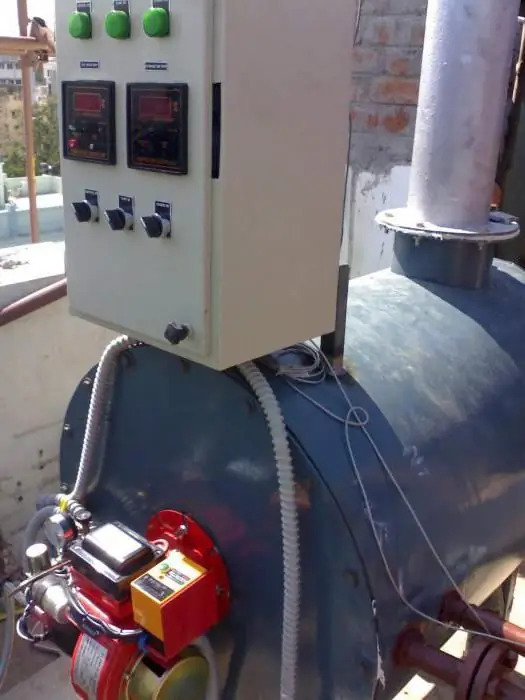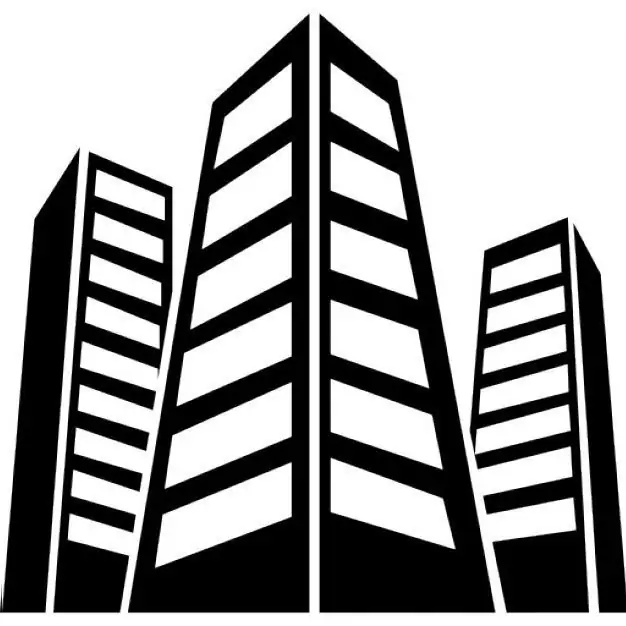2025 Author: Howard Calhoun | [email protected]. Last modified: 2025-01-24 13:10:41
One of the basic norms for creating rational working conditions in enterprises is lighting. Incorrect distribution or insufficient amount of this factor can cause fatigue of workers, which leads to a drop in efficiency. Industrial lighting can be divided into several different categories. First of all, the distribution depends on the radiation source and is divided into:
- natural;
- artificial;
- combined.

Natural light
This industrial lighting is provided by a natural source of light - the sun's rays, as well as other light fluxes scattered in the atmosphere. It is the most favorable option, because the human eye is more adapted to such a light source. As for industrial premises, natural lighting in them can be provided in the following ways:
- upper - flow is supplied by light lanterns in the ceilings;
- side - light enters the room from window openings;
- mixed - combines both previousway.
Lighting industrial premises with only natural look is not able to create the level of illumination that is needed, because it has a number of disadvantages.
- Change in weather conditions - increased cloudiness or precipitation, as well as darkness, significantly complicate working conditions.
- The specific location of the openings, due to the structure of the building, cannot ensure uniform light penetration.
- Direct sunlight can cause blinding, which is unacceptable for safety reasons.
Artificial lighting

The shortcomings of natural light sources are filled with artificial lighting, which can be used in two systems:
- general, the main task of which is to fully illuminate the entire room;
- combined - general and local lighting are combined in this system. The second bears the function of purposefulness of the light flux to workplaces or certain mechanisms and parts of equipment.
Important! Lighting of industrial buildings only due to artificial appearance is unacceptable.
Artificial lighting by purpose is divided into:
- Working. It is necessary to ensure a continuous technological process. Applicable when there is a shortage or lack of natural light.
-
Emergency. The presence of this type should be provided in case of a sudden stop of the mechanisms caused by:
- prolonged process disruption;
- emergency (explosion, fire, mass poisoning);
- risk of injury in crowded places;
- interruptions in the operation of vital production facilities - pumping stations, power plants, control rooms, ventilation systems, fire stations and many others, the availability of which depends on the characteristics of production.
Also, such lighting should be provided in case of evacuation of people, it should be located:
- on the territory of workshops with more than 100 workers;
- on stairs and passages that are provided for evacuation;
- in production areas where the interruption of work lighting can expose workers to injury;
- in dangerous places for people to pass.
Emergency lighting must have an individual connection to the power source, independent of the worker. This is necessary in order to ensure timely switching on in the event of a sudden shutdown of the operating voltage.
Sources of artificial lighting

The following devices are used as a light source:
- All known incandescent lamps, they are sources of thermal radiation. Such lamps are of limited use in production, as they distort color perception. But still they find their application due to the ease of connection and operation under various environmental influences.
-
Fluorescent lamps - glow occurs due to an electric discharge that occurs in gases or vapors. Such lamps are divided into several types depending on the pressure and the internal environment used. The use of gas discharge lamps is due to several parameters:
- economical due to lower electricity consumption;
- no thermal radiation from the light source;
- uniform distribution of light fluxes in all illuminated areas;
- high luminous efficiency;
- close to natural light spectrum.
Industrial lighting, which uses such lamps, of course, has disadvantages:
- optimum operating temperature from 15ºC to 25ºC;
- limited use in hazardous areas;
- blinding effect;
- choke noise.
-
LED lamps. Their use has become more and more popular in recent years. Industrial LED lighting has a number of advantages over fluorescent and incandescent lamps:

industrial LED lighting - economical energy consumption;
- resistance to voltage drops;
- high degree of protection against moisture and dust;
- possibility of use in industries hazardous by explosions;
- minimized ripple;
- natural colors;
- long life eliminates the constant replacement of lamps;
- sustainable.
Industrial artificial lighting can only be used in combination with local lighting in production areas. Its use as a single option is possible only if it is provided for by the norms of the technological process. This applies mainly to laboratory rooms, in which it is important to observe a special microclimate.
Combined lighting

This option is the most rational solution and is used for most industrial premises. The combined view combines natural and artificial lighting of industrial workshops. To ensure comfortable working conditions, the design should take into account the main parameters of illumination in the premises:
- Maintaining gloss within the norm. This is the increased brightness of surfaces, which leads to impaired vision.
- Uniformity of brightness distribution. Failure to comply with this parameter causes fatigue and reduces performance. It is characterized by the coefficient of unevenness, which is determined by the ratio of the illumination of the maximum value to the minimum value.
- Restriction of shadows, the presence of which leads to sudden changes in brightness. The greatest danger to human vision is moving shadows.
- Maximum prevention of light fluctuation. They can be caused by voltage drops in the network or the flickering of gas discharge lamps.
Industrial outdoor lighting
All of the above species belong tointerior spaces. But outdoor lighting is also extremely important in production areas. It provides good security and protection of the adjacent areas of industrial buildings. For outdoor lighting, you can use any light source. But considering that they must work productively all the dark hours of the day, the question of economy and good light output first of all arises. Of course, LED lighting will be a priority.

There are special guidelines for using outdoor lighting:
- Industrial outdoor lighting should have a separate wire connection system.
- The coefficient of uneven illumination of industrial sites of automobile and railway entrances should not exceed 15.
- To limit glare, the height of the luminaire must be provided in accordance with the regulations.
Recommended:
Quality lighting as a factor in increasing labor productivity

Quality lighting in offices should be primarily functional. Matching the style of the room cannot be discounted, but first of all it is important to pay attention to the level of illumination, brightness distribution, color temperature, color rendering and glare limitation. All these indicators have precisely set digital parameters
How to get a land plot for the construction of a residential building? How to choose a land plot for building a house?

It is not so difficult to get a land plot for the construction of a residential building if you know exactly how to do it
Airfield lighting equipment: types, placement and purpose

The main types of lighting equipment, details about its composition and characteristics. The primary purpose and tasks that SO systems perform. Description and differences between the first, second and third categories of lighting equipment. Used in Russia and the world types of signal lights. Features of the operation of runway-3 in Sheremetyevo
Industrial boilers: description, types, functions. Industrial expertise of boilers

The article is devoted to industrial boilers. The varieties of such units, functions and nuances of the examination for the safety of equipment are considered
Common property of an apartment building - what is it? Maintenance and repair of the common property of an apartment building

The legislation of the Russian Federation adequately regulates in detail the procedure for the use of common house property by apartment owners. What are the key provisions of the relevant rules of law?

